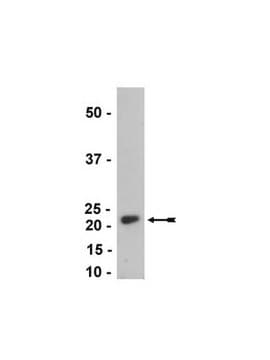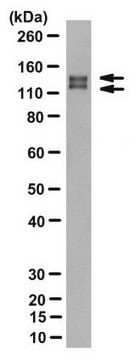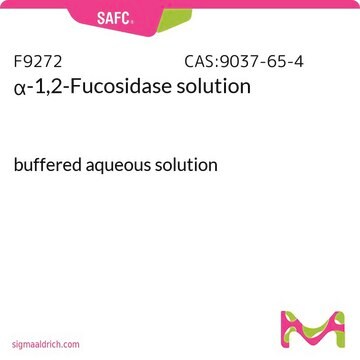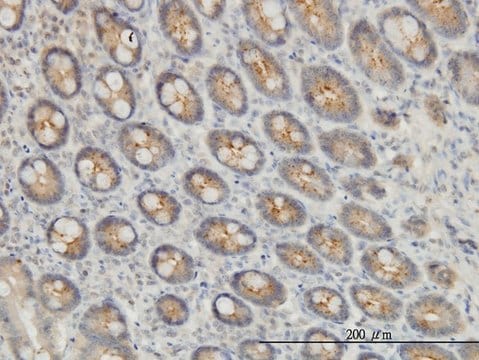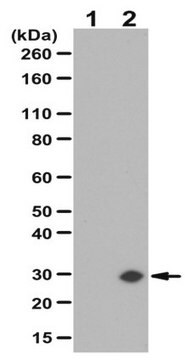MABT186
Anti-Exo70 Antibody, clone 70X13F3
clone 70X13F3, from mouse
Synonyme(s) :
Exocyst complex component 7, Exocyst complex component Exo70, rExo70
Sélectionner une taille de conditionnement
Sélectionner une taille de conditionnement
About This Item
Produits recommandés
Source biologique
mouse
Niveau de qualité
Forme d'anticorps
purified antibody
Type de produit anticorps
primary antibodies
Clone
70X13F3, monoclonal
Espèces réactives
human, rat
Technique(s)
immunocytochemistry: suitable
western blot: suitable
Isotype
IgG2bκ
Numéro d'accès NCBI
Numéro d'accès UniProt
Conditions d'expédition
wet ice
Modification post-traductionnelle de la cible
unmodified
Informations sur le gène
human ... EXOC7(23265)
Description générale
Immunogène
Application
Cell Structure
Cytoskeletal Signaling
Immunocytochemistry Analysis: A representative lot was used by an independent laboratory in Exo70 cells. (Hsu, S.C., et al. (2001). The Journal of Neuroscience. 21(11):3839–3848.)
Immunofluorescence Analysis: A previous lot was used by an independent laboratory in IF. (Hsu, S.C., et al. (2011). The Journal of Neuroscience. 31(10):3522–3535.)
Qualité
Western Blot Analysis: A 1:1,000 dilution of this antibody detected Exo70 in 10 µg of rat brain tissue lysate.
Description de la cible
Forme physique
Stockage et stabilité
Remarque sur l'analyse
Rat brain tissue lysate
Clause de non-responsabilité
Vous ne trouvez pas le bon produit ?
Essayez notre Outil de sélection de produits.
Code de la classe de stockage
12 - Non Combustible Liquids
Classe de danger pour l'eau (WGK)
WGK 1
Point d'éclair (°F)
Not applicable
Point d'éclair (°C)
Not applicable
Certificats d'analyse (COA)
Recherchez un Certificats d'analyse (COA) en saisissant le numéro de lot du produit. Les numéros de lot figurent sur l'étiquette du produit après les mots "Lot" ou "Batch".
Déjà en possession de ce produit ?
Retrouvez la documentation relative aux produits que vous avez récemment achetés dans la Bibliothèque de documents.
Filtres actifs
Notre équipe de scientifiques dispose d'une expérience dans tous les secteurs de la recherche, notamment en sciences de la vie, science des matériaux, synthèse chimique, chromatographie, analyse et dans de nombreux autres domaines..
Contacter notre Service technique